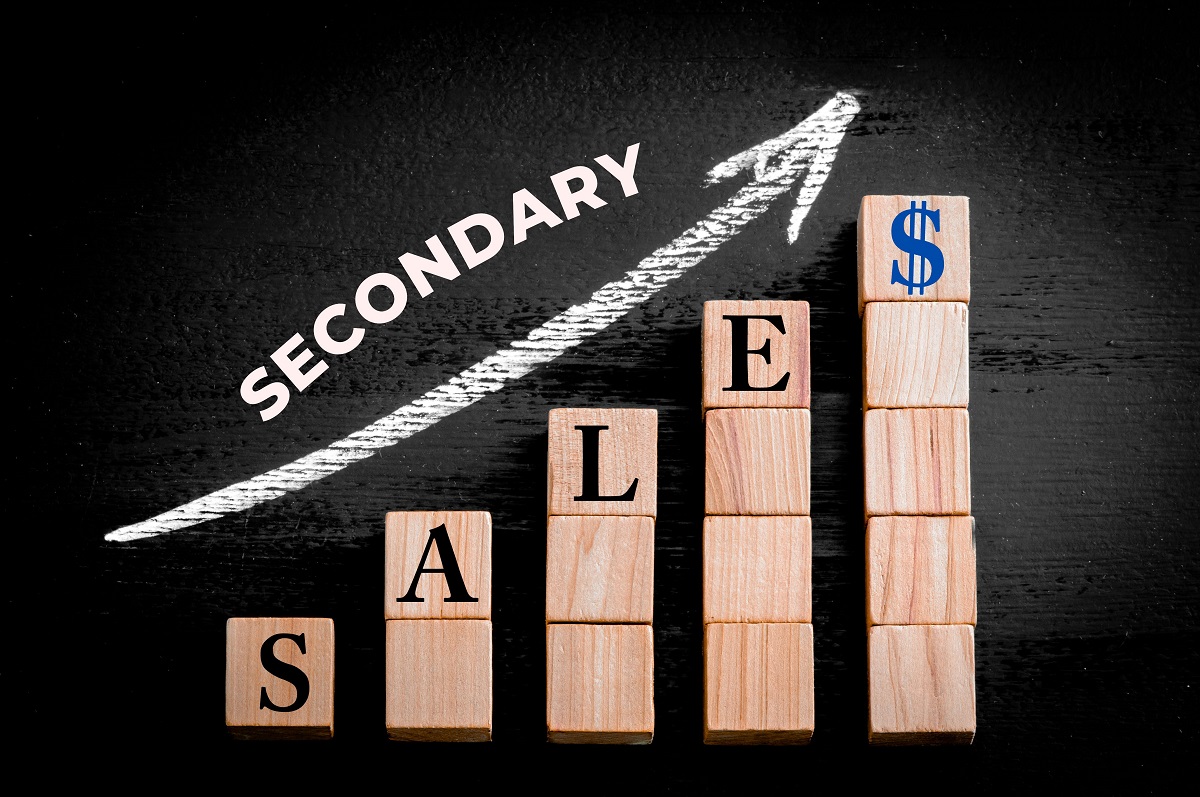
Table of Contents
Published on: May 29, 2024
The pharmaceutical industry is a complex and ever-evolving sector, where managing smart sales, especially secondary sales, remains a significant challenge for pharma based marketing companies. The intricacies of primary, secondary, and tertiary sales layers demand a nuanced understanding and strategic approach to ensure the effective movement of pharmaceutical products from production to the end user.
First Understand About Primary Sales, Secondary Sales, and Tertiary Sales
(1) Primary sales involve the initial transfer of goods from manufacturers to distributors, marking the first key step in the distribution chain.

Once the goods are moved from the manufacturer’s warehouse to the distributor’s warehouse, the next phase involves the distribution of these goods to chemists or retailers. The distributors manage the inventory and smart supply chain solutions to ensure that retailers receive the products they need to serve the end consumers.
Factors Influencing Primary Sales:
Company Popularity: How well-known the company is.
Distribution Network Size: The extent of the distribution network.
Secondary Sales: The performance of secondary sales (explained below).
Consumption Pattern: The refill rate of the product (larger products may have slower consumption).
Example: Companies like Cipla Limited and Lupin Limited have extensive top-level distributors, resulting in significant primary sales.
(2) Secondary sales take place when distributors transfer goods to either chemists or healthcare professionals.

Process 1: In a three-tier distribution system, distributors are responsible for supplying products to chemists or retailers. These intermediaries then sell the goods to the final consumers, ensuring availability across various retail points.
Process 2: In the same three-tier system, distributors may also provide goods directly to doctors or hospitals, facilitating the supply of pharmaceuticals to healthcare institutions for patient care.
Factors Influencing Secondary Sales:
Brand Equity: The reputation and brand strength of the company.
Stock Availability: Ensuring products are readily available.
Distributor/Retailer Aggressiveness: The distributor’s or retailer’s proactive approach.
Example: Modern retail operates on a 2-tier concept, where primary sales happen from the company to modern retail outlets (e.g., Mankind Pharma), and secondary sales occur from modern retail to customers.
(3) Tertiary sales represent the final stage. They occur when goods are sold to the end customer (consumer).

Sequence: Manufacturer ➡ Distributor ➡ Retailer ➡ End Customer.
Importance: Tertiary sales complete the entire supply chain journey, ensuring goods reach consumers.
Understanding the distinctions between these sales categories is fundamental for manufacturers aiming to optimize their distribution networks. Each layer presents unique challenges and opportunities for enhancing efficiency and expanding market reach. For pharmaceutical companies, a robust strategy encompassing all three sales levels are essential for sustaining growth and meeting the demands of a competitive market.
How To Boost Secondary Sales Effectiveness?
Boosting the effectiveness of secondary sales requires a comprehensive approach that encompasses understanding market needs, optimizing distribution channels, and leveraging data analytics. Manufacturers must first gain insights into the demand dynamics within various market segments. This involves analyzing prescription trends, pharmacy needs, and healthcare provider preferences. Equipped with this knowledge, companies can tailor their distribution strategies to better align with market demands.
Optimizing distribution channels is another critical aspect. This can involve refining the logistics of product delivery to ensure timely and efficient distribution to pharmacies and healthcare providers. Additionally, fostering strong relationships with distributors and retailers is crucial for ensuring product availability and visibility in the market.
Data analytics plays a pivotal role in enhancing secondary sales effectiveness. By analyzing sales data, manufacturers can identify high-performing products and market segments, enabling them to allocate resources more strategically. Furthermore, predictive analytics can provide insights into future market trends, allowing companies to adjust their strategies proactively.
Key Takeaways of Secondary Sales Management
Key takeaways include the importance of a responsive supply chain that can adapt to changing market demands and the role of strong partnerships with distributors and healthcare providers.
By understanding evolving healthcare needs and competitor movements, manufacturers can position their products more effectively.
Best Practices to Boost Secondary Sales
Implementing best practices is essential for maximizing secondary sales outcomes. This includes employing targeted marketing strategies that address the specific needs and preferences of healthcare providers and pharmacies. Tailoring marketing efforts based on detailed market analysis helps ensure that promotional activities resonate with the target audience, thereby increasing product uptake.

Another best practice involves streamlining the supply chain to improve product availability. This can be achieved through advanced inventory management systems that predict demand fluctuations and adjust stock levels accordingly. Ensuring that products are readily available when and where they are needed can significantly enhance secondary sales performance.
Furthermore, investing in training and development for the sales force and distributor partners empowers them with the knowledge and skills needed to effectively sell and support the product range. A well-informed and motivated sales team is a crucial asset in driving secondary sales.
The Complexity of the Pharmaceutical Supply Chain
The pharmaceutical supply chain encompasses a series of steps from manufacturing to the end consumer, each with its own set of challenges. The complexity arises from stringent regulatory requirements, the need for temperature-controlled logistics, and the global nature of manufacturing and distribution networks. These factors can create bottlenecks and inefficiencies that impact secondary sales.

To navigate this complexity, manufacturers must adopt a holistic supply chain management approach. This involves integrating advanced logistics solutions, adhering to regulatory compliance standards, and fostering collaboration across the supply chain. By addressing these challenges head-on, pharmaceutical companies can enhance the efficiency and reliability of their secondary sales operations.
How can pharmaceutical companies increase sales?
Increasing sales in the pharmaceutical industry requires a multi-faceted approach that goes beyond enhancing secondary sales. Companies must innovate continuously, developing new and improved products that meet the evolving needs of the healthcare sector. Additionally, expanding into new markets and customer segments can unlock new sales opportunities.
Building and maintaining strong brand recognition is also vital. This can be achieved through effective marketing campaigns, patient education programs, and engagement with healthcare professionals. By establishing their products as trusted and preferred choices among consumers and healthcare providers, companies can drive sales growth across all channels.
Leveraging Technology to Enhance Secondary Sales Management
Technology plays a critical role in optimizing secondary sales management. Implementing advanced sales force automation (SFA) systems can streamline sales processes, improve data accuracy, and enhance communication with distributors and retailers. These systems enable real-time tracking of sales activities, inventory levels, and market trends, providing valuable insights for strategic decision-making.

Additionally, Customer Relationship Management (CRM) solutions can improve engagement with healthcare providers and pharmacies. These tools facilitate personalized communication, track interactions, and help identify opportunities for upselling and cross-selling. By leveraging technology, pharmaceutical manufacturers can enhance the efficiency and effectiveness of their secondary sales strategies.
Real-Time Case Study of Secondary Sales
A real-time case study exemplifies the impact of effective secondary sales management. A leading pharmaceutical company faced challenges with product distribution and visibility in key markets. By implementing a targeted secondary sales strategy that included optimizing its distribution network, leveraging data analytics for market insights, and enhancing distributor partnerships, the company was able to significantly increase product availability and sales performance.
(1) AI-Driven Sales Forecasting at Apollo Pharmacy: Apollo Pharmacy, a leading pharmacy retail chain in India, leveraged AI and data-driven solutions for secondary sales optimization. They analyzed historical sales data, seasonality patterns, and external factors (such as festivals and health trends) using real-time algorithms. By accurately forecasting demand, they optimized inventory levels, reduced wastage, and ensured timely restocking. This approach led to increased sales revenue and cost savings.
(2) PharmEasy’s Dynamic Pricing Strategy: PharmEasy, an online pharmacy platform, used real-time pricing algorithms to optimize secondary sales. By adjusting prices based on demand, supply, and competitor pricing, they maximized revenue while ensuring affordability for customers.
(3) Cipla’s Demand-Supply Balancing: Cipla, a renowned pharmaceutical manufacturer, leveraged real-time data to balance demand and supply. By monitoring sales trends, production capacities, and inventory levels, they optimized secondary sales and minimized stockouts.
These case studies highlight the importance of a strategic approach to secondary sales management. Through careful analysis and targeted interventions, pharmaceutical manufacturers can overcome distribution challenges and improve their market presence.
The future of secondary sales in the pharmaceutical industry
It’s likely to be shaped by technological advancements and evolving market dynamics. Digitalization and data analytics will continue to play a pivotal role in optimizing sales strategies and supply chain management. Furthermore, personalized medicine and e-commerce are expected to influence distribution channels and consumer purchasing behaviours.
To stay ahead, pharmaceutical companies must remain agile, continuously adapting their strategies to meet the changing needs of the market. Embracing innovation and leveraging technology will be key to enhancing secondary sales performance and sustaining long-term growth.
Conclusion:
It’s important to note that effective secondary sales management requires implementing various strategies, such as sales planning, product knowledge, strategic product placement, understanding and catering to customer needs, effective marketing and merchandising, trade promotions, and defining and tracking key result areas (KRAs). These combined efforts play a crucial role in achieving success in the pharmaceutical industry.

















